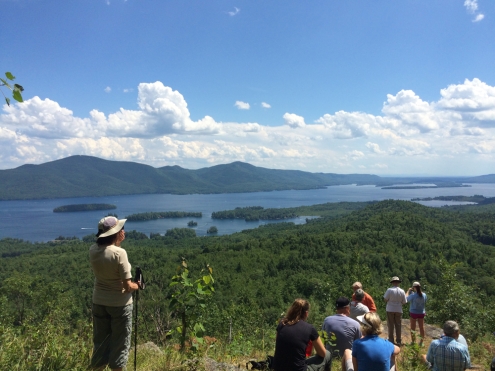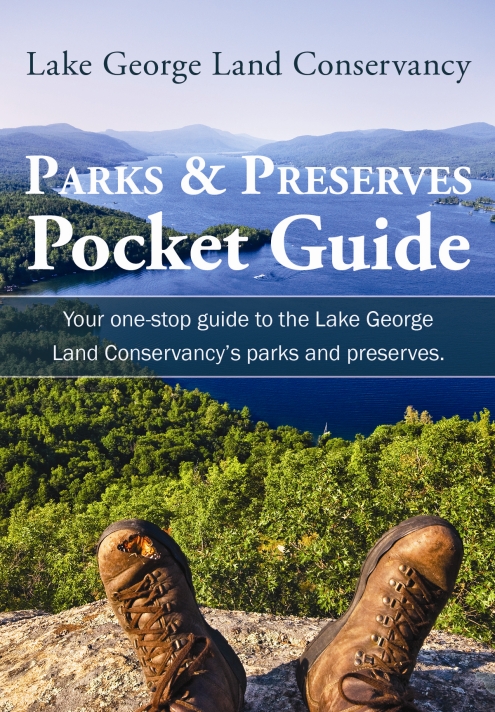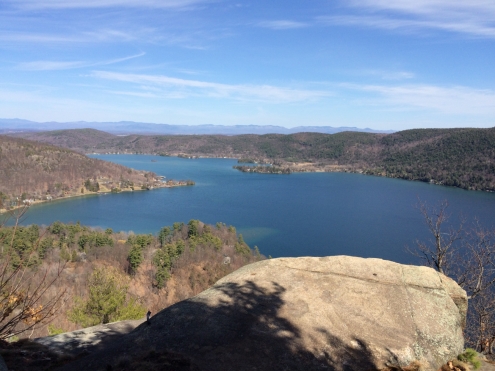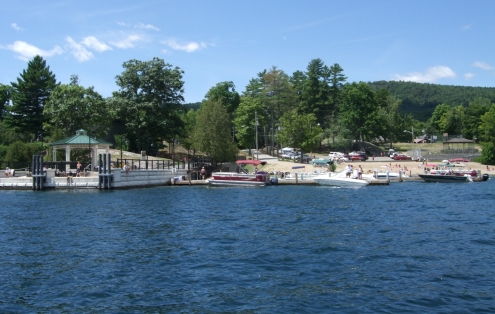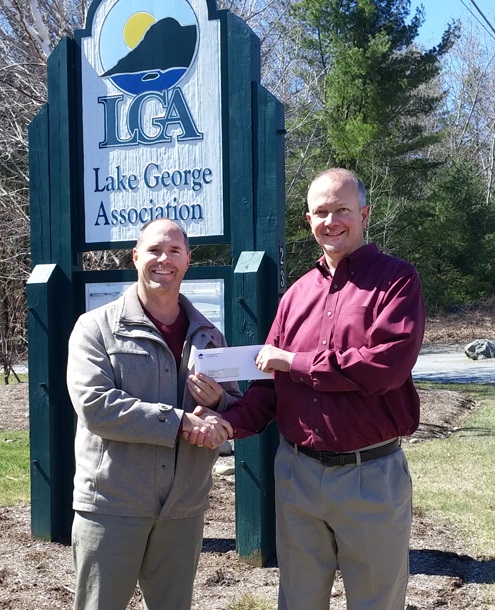
Lake George Association Executive Director, Walt Lender (right), handing Lake George Park Commission Executive Director, Dave Wick (left), a $30,000 check.
In the first year of a new era in Lake George water protection, the Lake George Association has followed through on its commitment to provide necessary financial support for the Lake George Park Commission’s Mandatory Boat Inspection Program.
Following the Park Commission’s recent adoption of permanent regulations for the Mandatory Boat Inspection Program, Lake George Association Executive Director Walt Lender presented Park Commission Executive Director David Wick with a check for $30,000 – the first installment of the LGA’s three-year commitment.
“Aquatic invasive species pose a serious threat to the waters of Lake George and can cause significant detrimental impacts to the ecology and economy of the Lake George Park,” Lender said. “Having worked with the Park Commission for decades, we know this investment made by the LGA on behalf of its members and donors is going to be put to good use to protect Lake George’s water quality.”
The LGA is one of a number of organizations – nonprofits and municipalities – to share the costs of the program so that trailered vessels arriving at Lake George can be inspected to ensure they meet the “Clean, Drained and Dry” standard and be decontaminated if necessary at no charge to them.
The Park Commission’s two-year pilot boat inspection program that concluded in 2015 successfully processed 48,081 boats through the seven inspection stations and decontaminated 2,895 vessels.
As far as the LGA is concerned, that’s 2,895 very good reasons to support the Mandatory Boat Inspection Program.
The LGA’s investment of $30,000 in the Lake George Park Commission’s Mandatory Boat Inspection Program follows on the announcement earlier in the spring that the Lake George Association is doubling its investment in milfoil removal in 2016 – to $100,000 from $50,000.
The milfoil removal project is coming into the third year of a three-year intensive effort to remove as much milfoil as possible in Lake George. That project also includes nonprofits and the Lake George Park Commission.
The Lake George Association is the guardian of Lake George water quality, and has been for more than 130 years. Founded in 1885, our membership is composed of thousands of residents, visitors and business owners who help the LGA with our mission to protect Lake George from the perils that face modern lakes.



